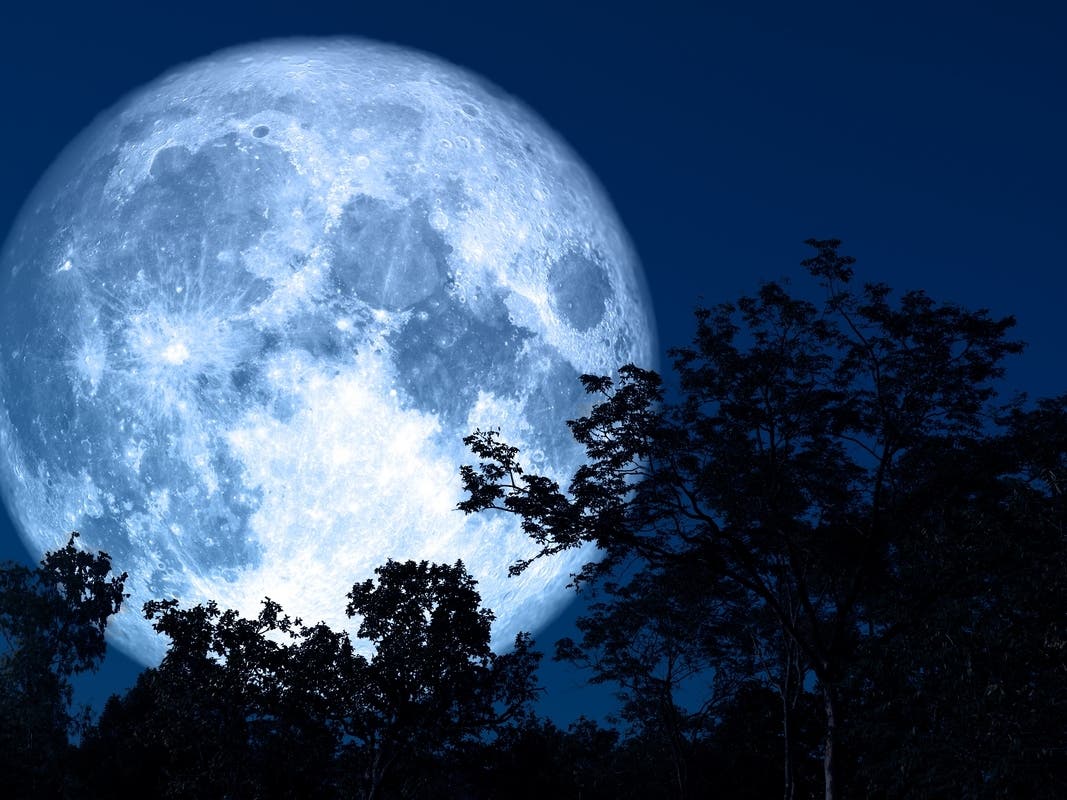Weather
A Rare Blue Supermoon Is Coming: What To Know In GA
The rare blue moon coming to the skies above Georgia on Monday is the first of four consecutive supermoons.

GEORGIA — The rare blue moon coming to the skies above Georgia on Monday, Aug. 19, isn’t just special, it’s also the first of four consecutive supermoons.
The moon turns full at 2:26 p.m. EDT Monday. You won’t be able to see it then, but it will appear a bit bigger and brighter than normal as it rises in the east just after sunset. That’s at 8:18 p.m. local time.
The weather has to cooperate, of course. The National Weather Service forecast for early next week — the moon will appear full from Sunday through Wednesday — calls for a clear sky though Sunday night has a 10 percent chance of showers and thunderstorms before 8 p.m.
Find out what's happening in Across Georgiawith free, real-time updates from Patch.
Here’s what you need to know:
This Is A Seasonal Blue Moon
Find out what's happening in Across Georgiawith free, real-time updates from Patch.
Monday’s full moon is a blue moon under the traditional definition. Since the 1940s, the term “blue moon” has been used in common usage for the second full moon of a month. That’s not the case here. Monday’s is a seasonal blue moon.
As NASA describes it, a seasonal blue moon is the third full moon that occurs in an astronomical season that has four full moons instead of the usual three.
The first recorded use of the term in English was in 1528, with speculations including the origin of the term was “betrayer moon” because it led to mistakes in setting the dates for Lent and Easter.
“Or,” NASA said, “it may be a comparison to rare events such as when dust in the atmosphere makes the moon actually appear blue.”
The moon won’t appear blue, barring something unforeseen like that. It will look silvery to gray, just like always.
Except …
It’s The 1st Of 4 Supermoons
“Supermoon” is a term coined in 1979 by astrologer Richard Nolle to describe the phenomenon when the moon’s orbit is closest to Earth, or at perigee, at the same time the moon is full. As the term has been popularized, especially in the past decades, the biggest and brightest full moons of the year have become a favorite among skywatchers.
Supermoons aren’t equal in intensity, and Monday’s won’t be the most impressive in the string of four supermoons coming our way. That’s because some lunar perigees come closer to Earth than others, At “extreme perigee,” that is the closest, the moon can appear 14 percent larger and about 16 percent brighter.
The supermoons of Sept. 18 and Oct. 17 are “virtually tied for the closest of the year,” NASA says. The last of the four supermoons is on Nov. 15.
Monthly Full Moons Have Other Names
Before anyone started using terms like “supermoon,” full moons were given names to help Native American tribes and others keep track of the seasonal changes that dictated the lives of their communities.
August’s full moon is often called the “full sturgeon moon” because it’s the time of year when sturgeon, a staple for Native Americans in the region, were easily caught in the Great Lakes and Lake Champlain.
It has several other names, including the “flying up moon,” which the Cree used to describe the time of year when young birds fledge their nests, according to The Old Farmer’s Almanac.
Other names include the “corn or green corn moon,” the “barley moon,” the “herb moon,” the “grain moon,” and the “dog moon,” according to NASA.
Sept. 18’s full supermoon will be a super harvest moon, and it will also undergo a partial lunar eclipse. The Oct. 17 full supermoon will be a super hunter’s moon, and the closest to Earth of the four — though as NASA noted, the Sept. 18 full moon also will come close. And the Nov. 15 full supermoon will be the super beaver moon.
Get more local news delivered straight to your inbox. Sign up for free Patch newsletters and alerts.